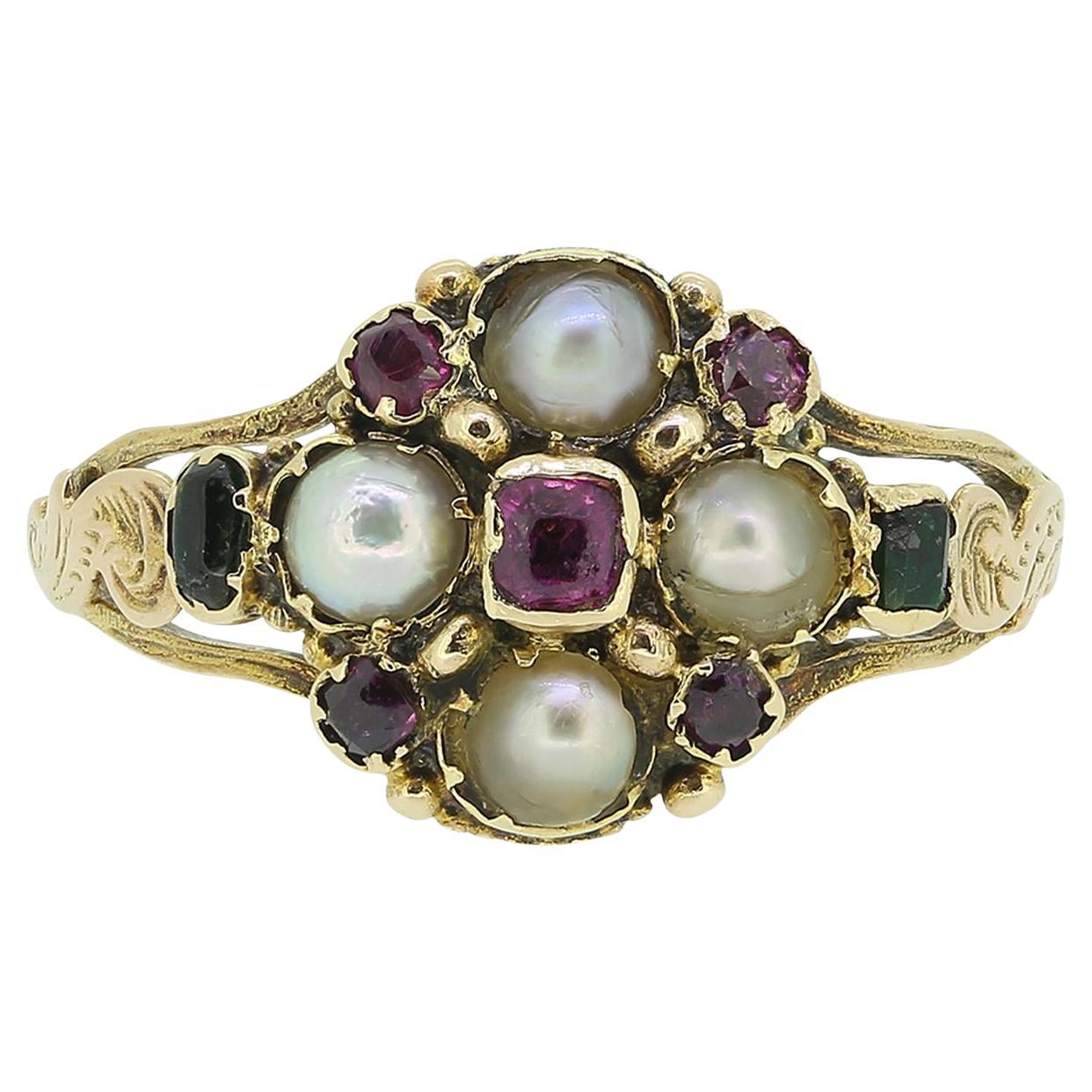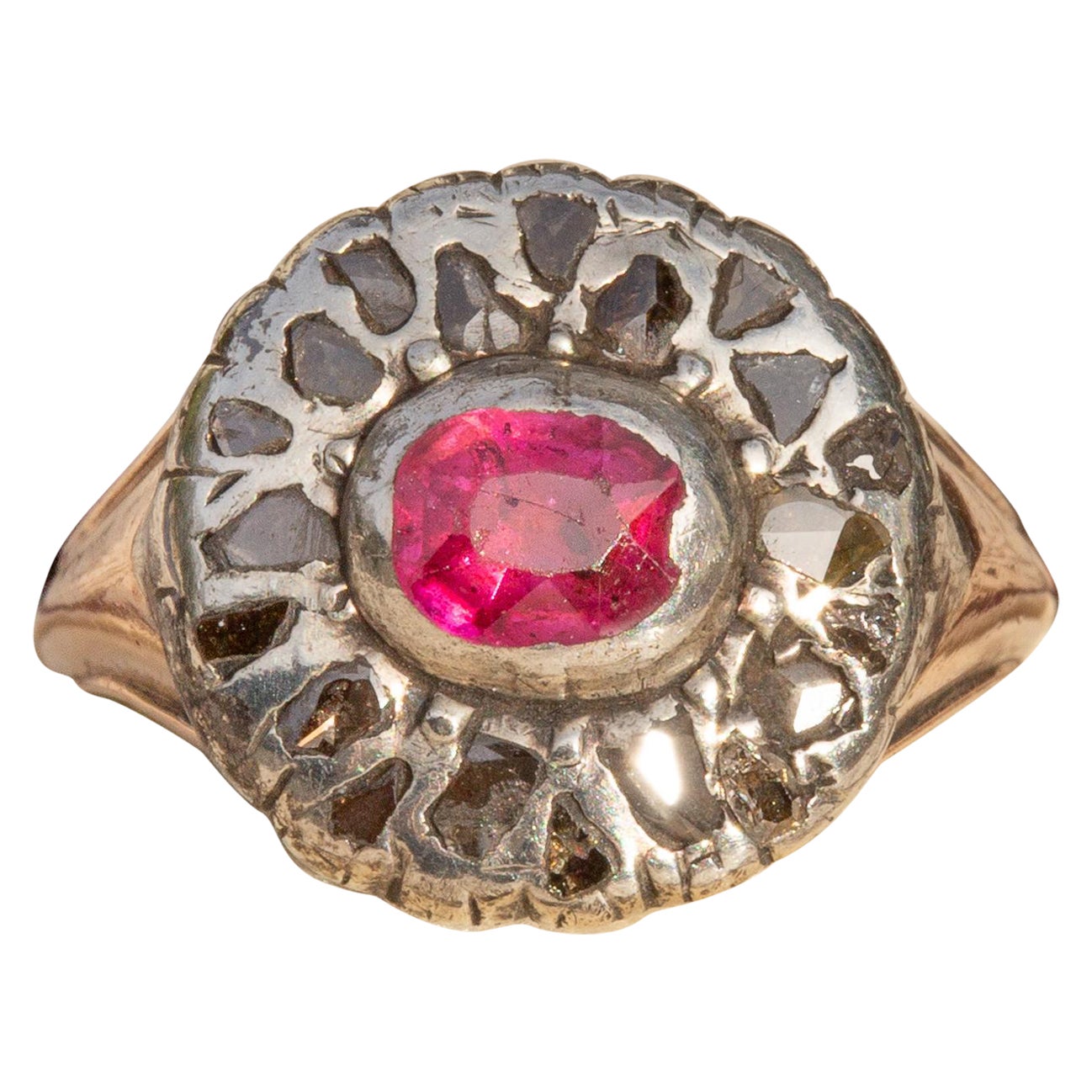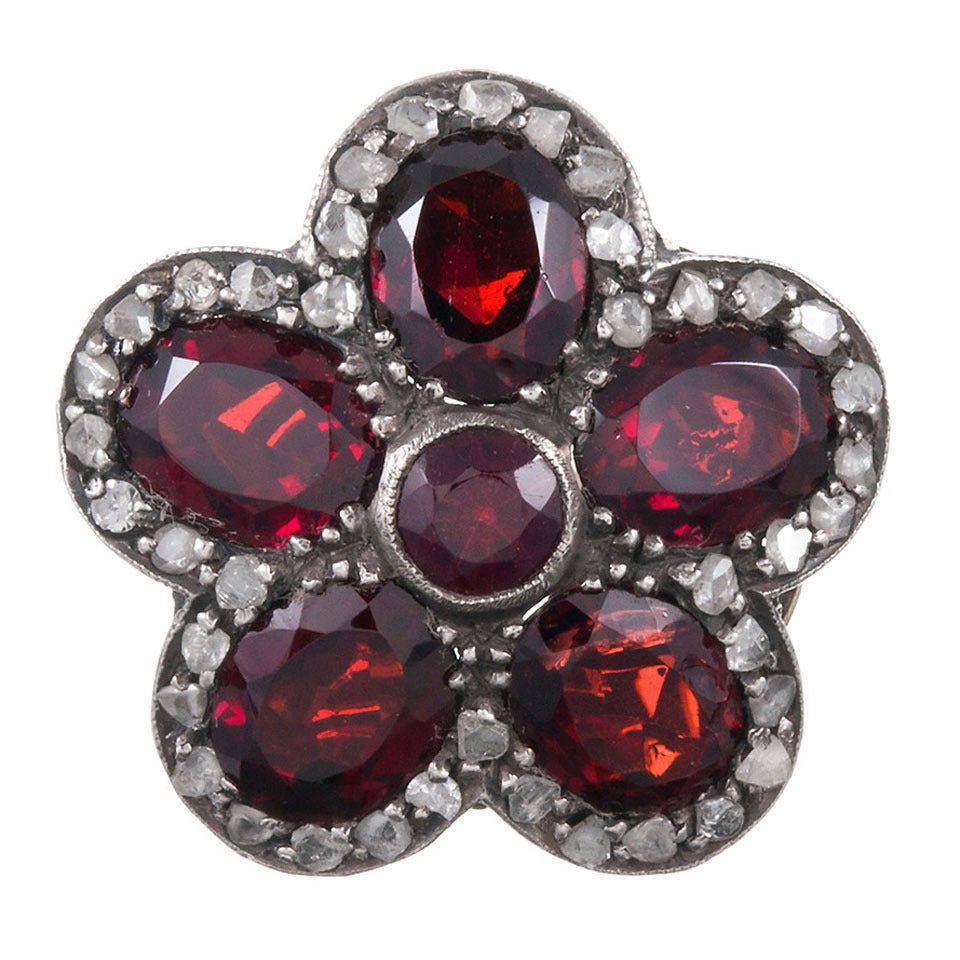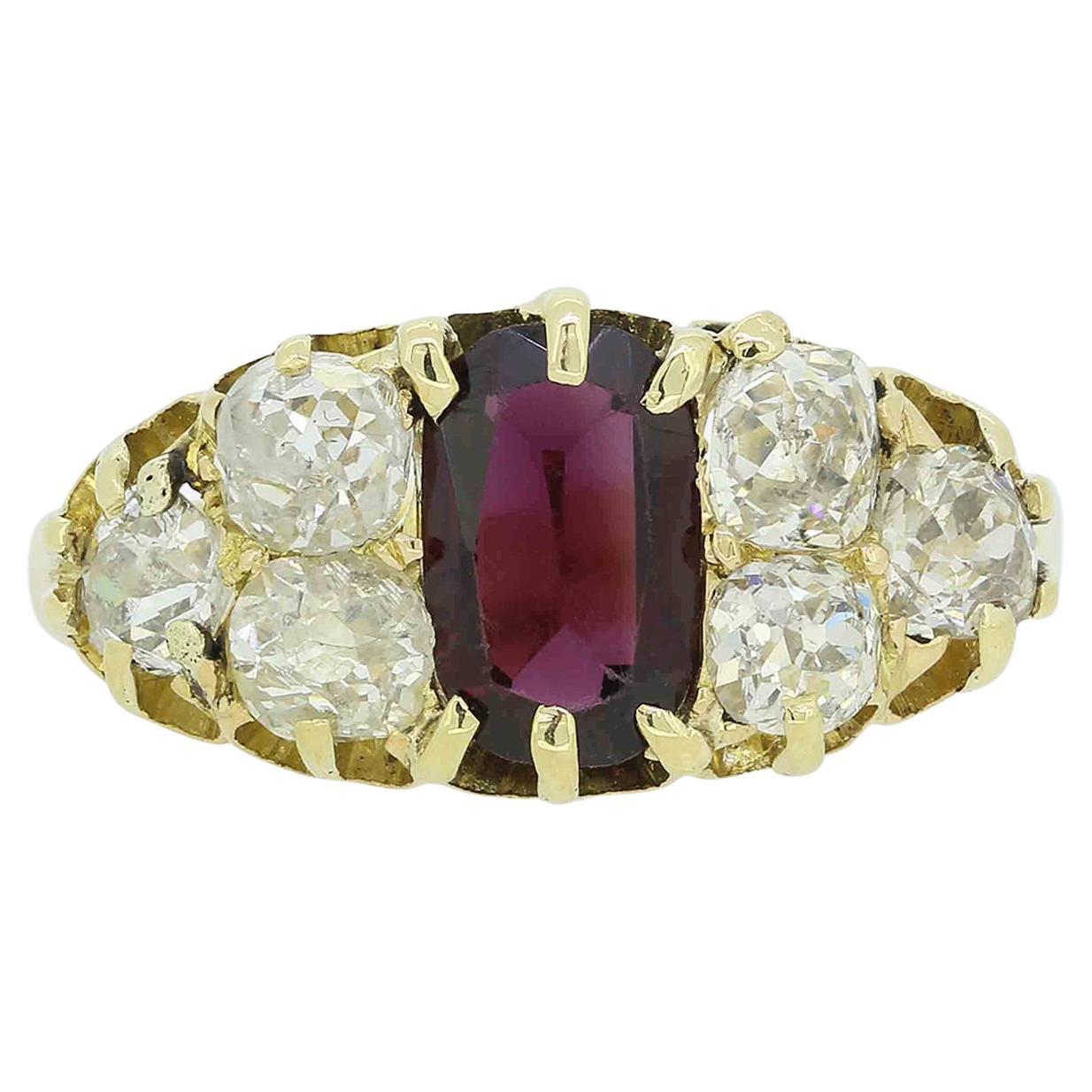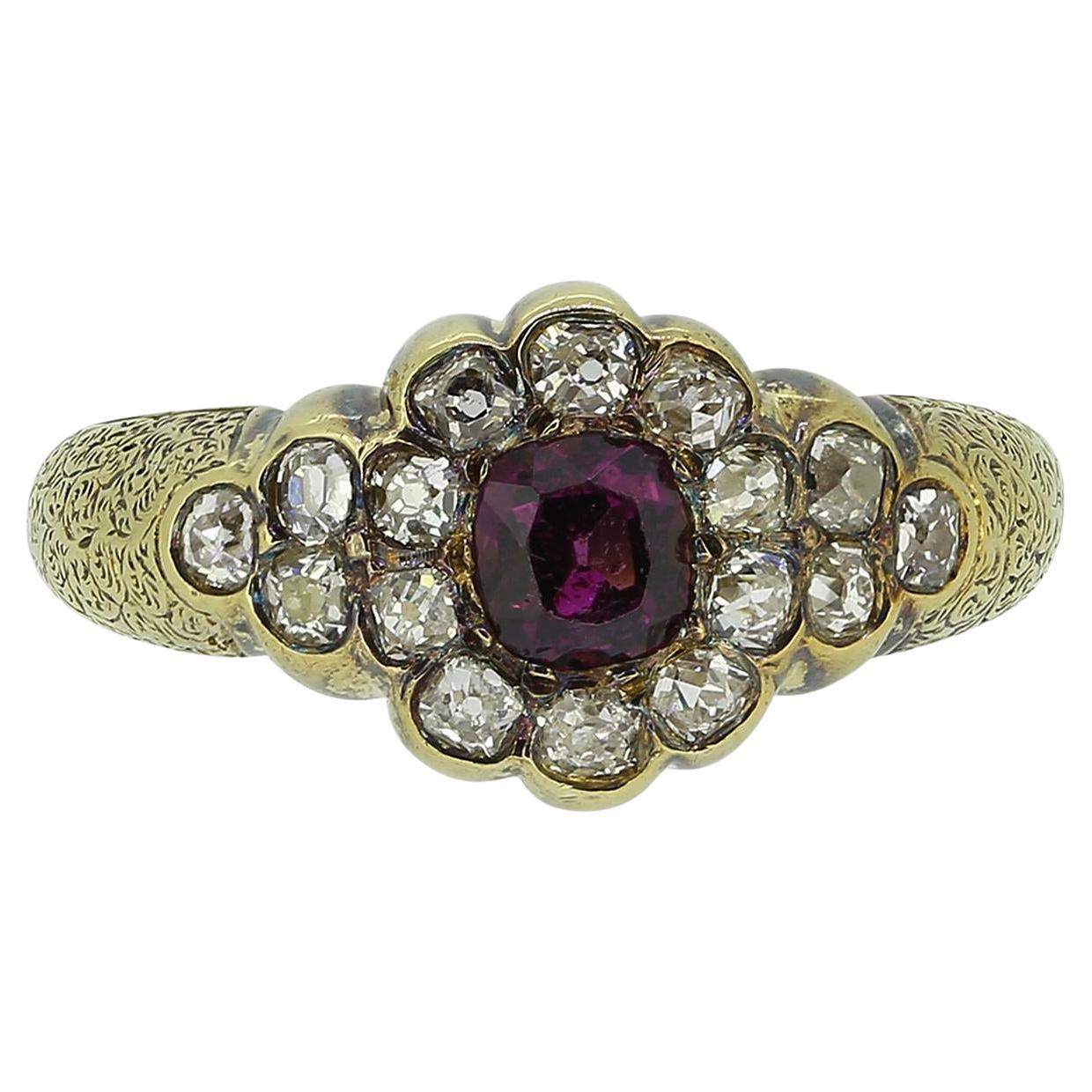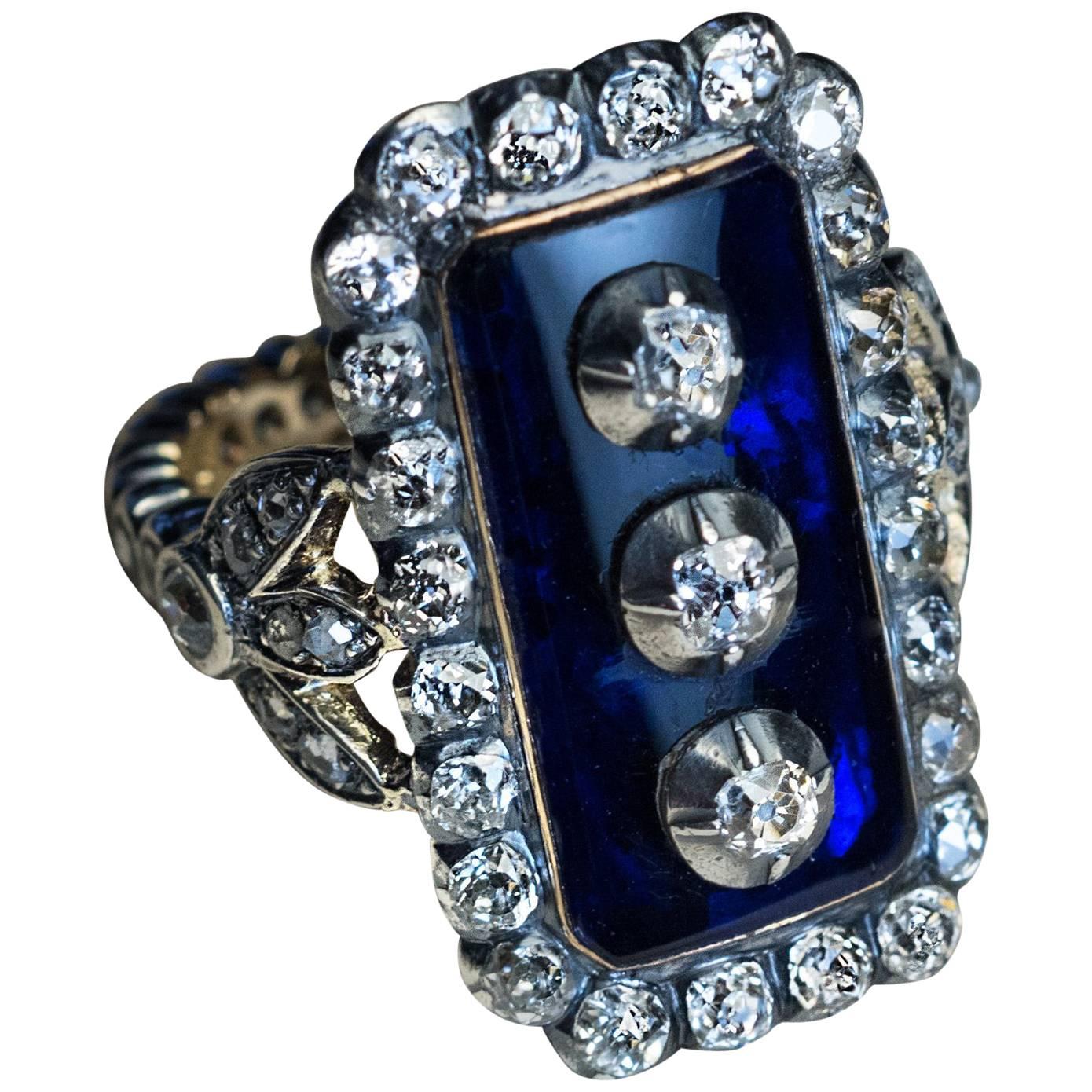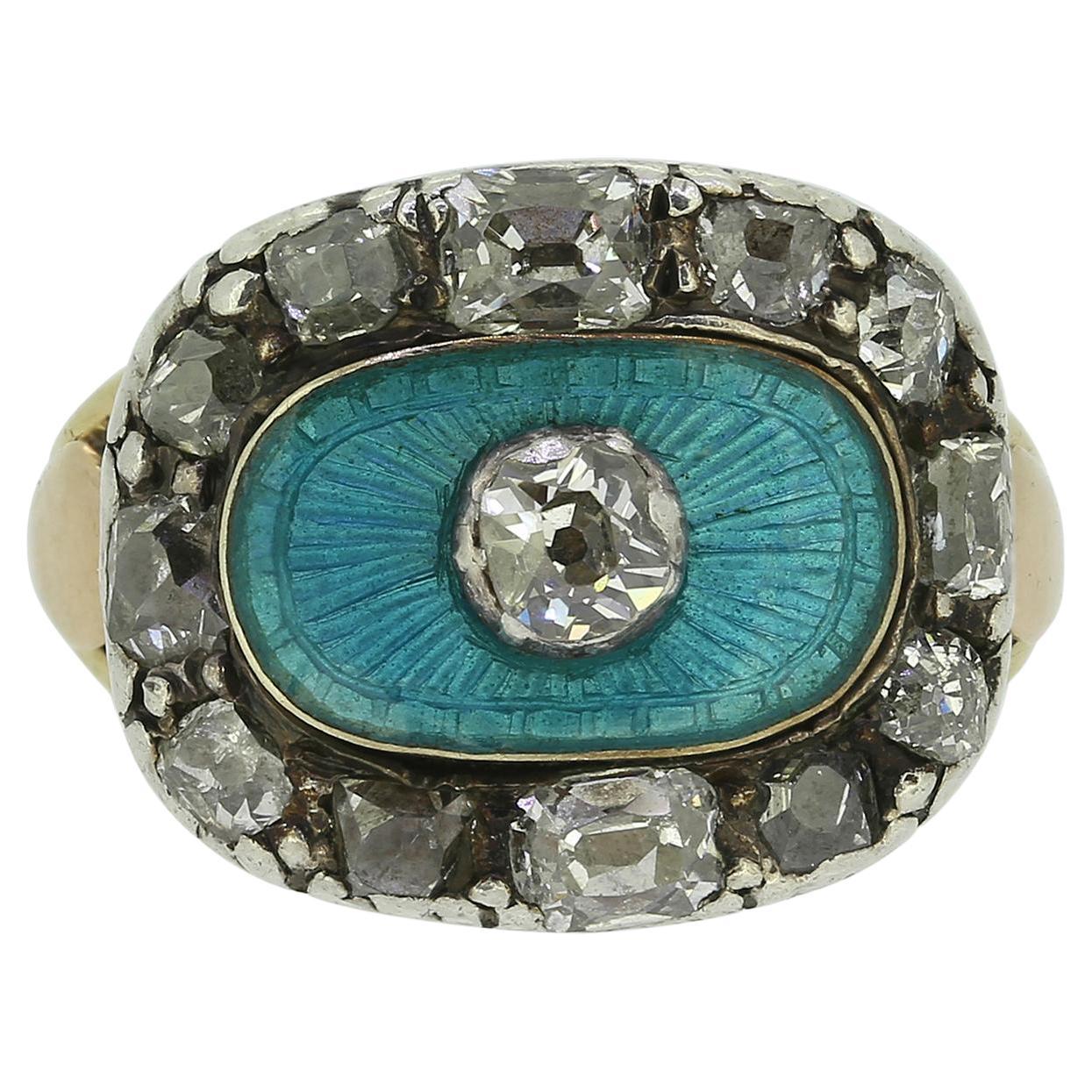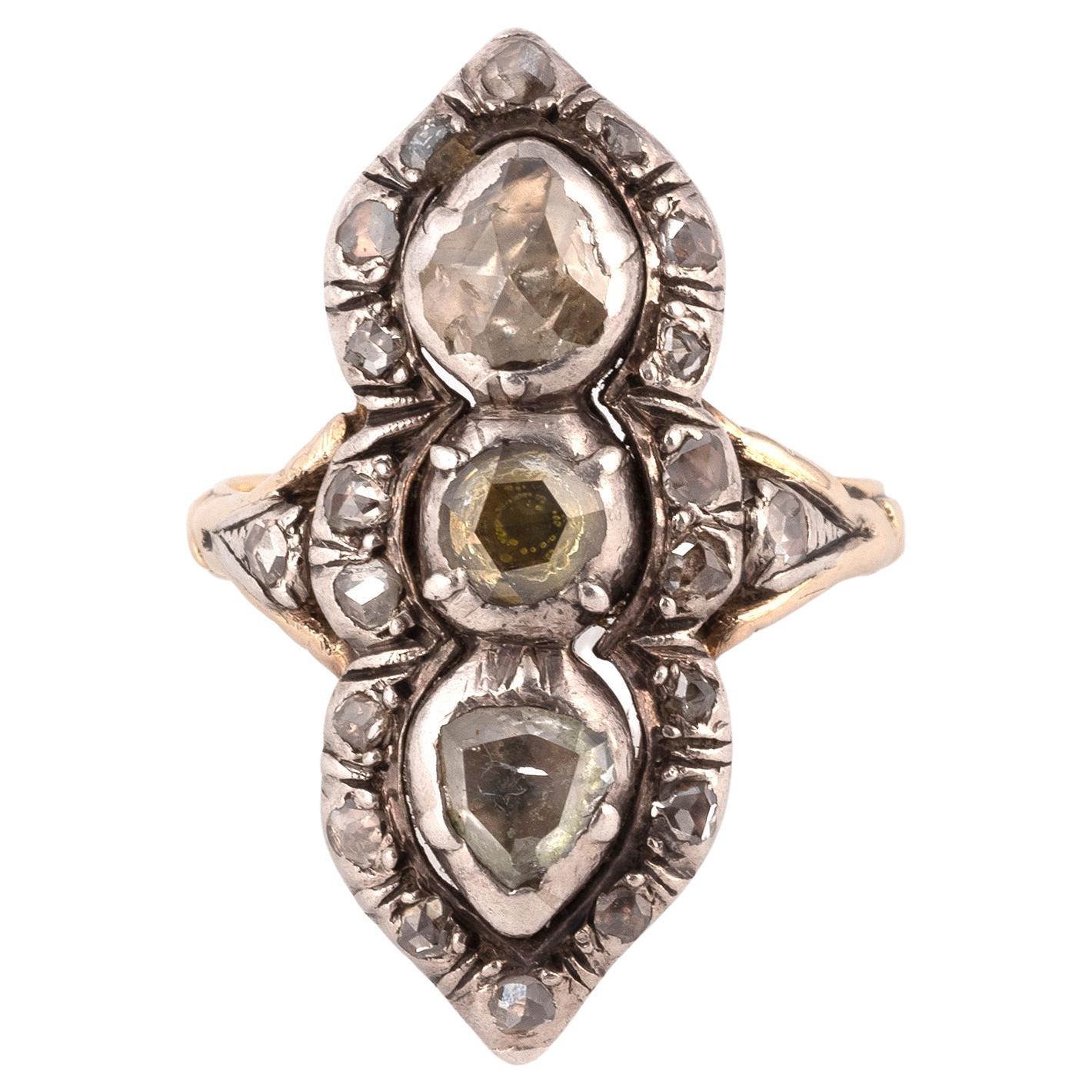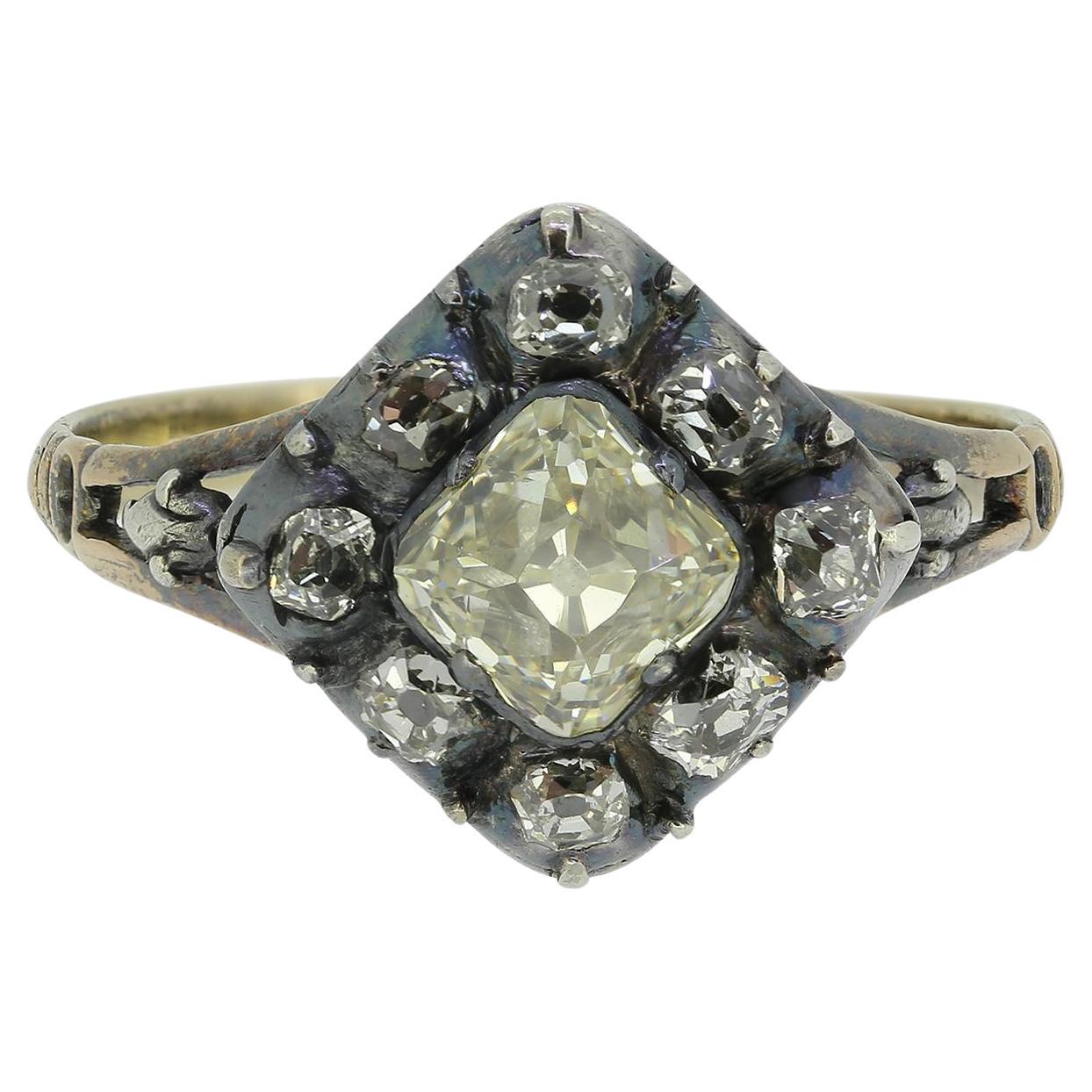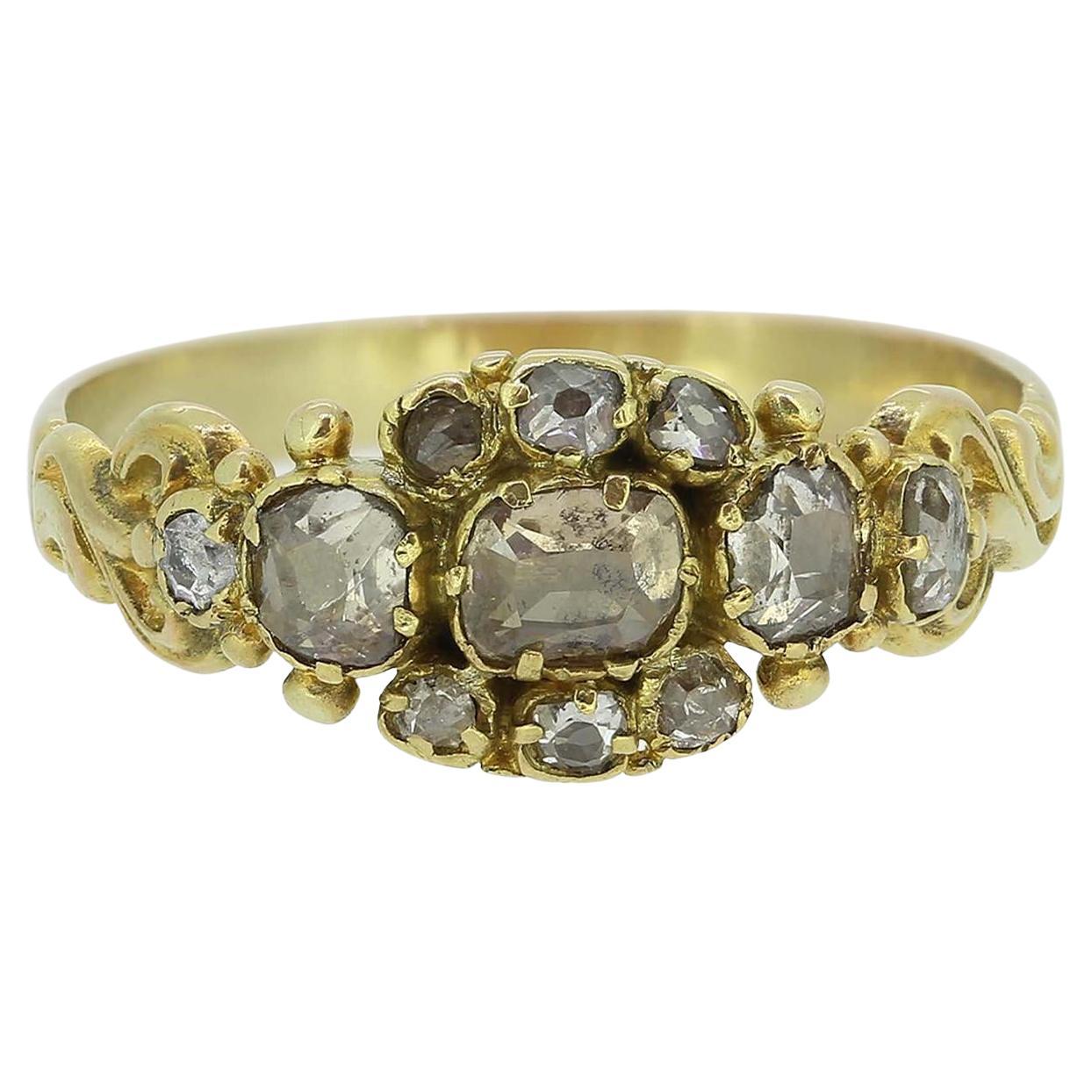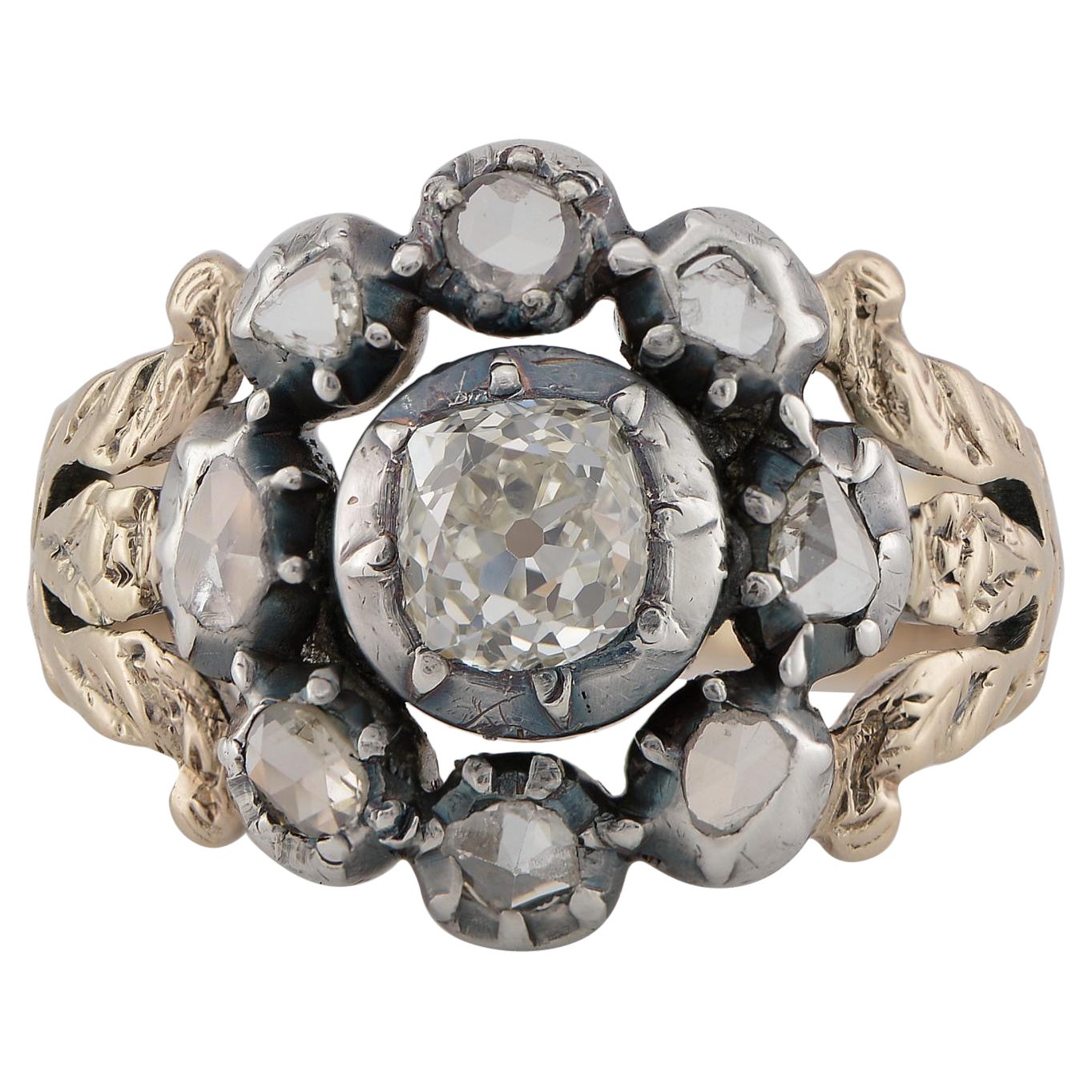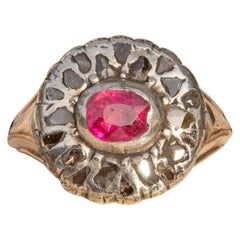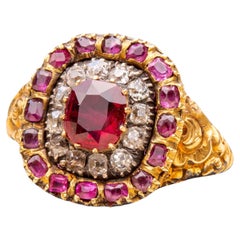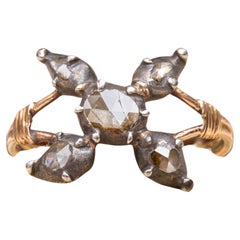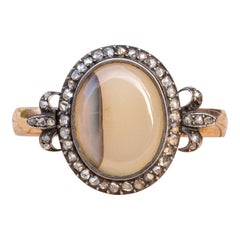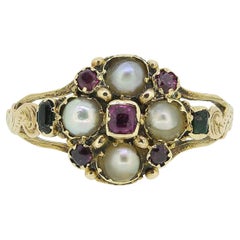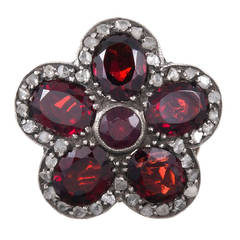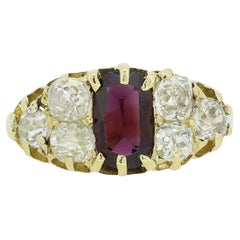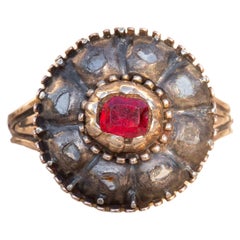
Antique Italian Traditional Garnet and Diamond Cluster Ring Georgian Era
View Similar Items
Video Loading
Want more images or videos?
Request additional images or videos from the seller
1 of 16
Antique Italian Traditional Garnet and Diamond Cluster Ring Georgian Era
$2,369.89List Price
About the Item
About the Seller
5.0
Vetted Professional Seller
Every seller passes strict standards for authenticity and reliability
Established in 2019
1stDibs seller since 2022
46 sales on 1stDibs
Authenticity Guarantee
In the unlikely event there’s an issue with an item’s authenticity, contact us within 1 year for a full refund. DetailsMoney-Back Guarantee
If your item is not as described, is damaged in transit, or does not arrive, contact us within 7 days for a full refund. Details24-Hour Cancellation
You have a 24-hour grace period in which to reconsider your purchase, with no questions asked.Vetted Professional Sellers
Our world-class sellers must adhere to strict standards for service and quality, maintaining the integrity of our listings.Price-Match Guarantee
If you find that a seller listed the same item for a lower price elsewhere, we’ll match it.Trusted Global Delivery
Our best-in-class carrier network provides specialized shipping options worldwide, including custom delivery.More From This Seller
View AllScarce Antique Georgian Pink Ruby and Diamond Floral Cluster Ring c 1800 Italian
Located in London, GB
This unusual antique Georgian era floral ruby and diamond cluster ring dating to around 1800 was probably made in Italy. In the middle of the ring head lies a collet set and foil-backed bright pink ruby. It is surrounded by a sea of 20 flat-cut and closely set diamonds in a flower head cluster style. The raised ruby setting appears to fixed to the ring with a cut-down rivet which is visible on the smooth underside of the bezel. The rosy hued gold ridged shoulders taper down to the back of the shank. This elegant ring sits fairly flat on the finger to allow for frequent wear and is without doubt a particularly unusual and scarce example of its kind.
UK size L 1/2, US size 6
4.72g, band tests as 14K gold, bezel tests as silver, ring head measures 14mm x 13mm. Each diamond measures between 1mm and 3mm. Approx 0.3ct...
Category
Antique Early 1800s Italian Georgian Cluster Rings
Materials
Diamond, Ruby, 14k Gold, Silver
Antique Georgian Early 19th Century 1ct Ruby and Diamond Target Cluster Ring
Located in London, GB
A superb antique Georgian ruby and diamond ring made in England, circa 1820. The centre of this ‘target’ shaped cluster ring is set with a 1ct cushion cut deep red ‘pigeon’s blood’ r...
Category
Antique Early 19th Century English Georgian Cluster Rings
Materials
Diamond, Ruby, 22k Gold
Scarce Antique Georgian Rose Cut Diamond Flower Floral Cluster Ring Rare Design
Located in London, GB
A superb antique Georgian diamond cluster ring, circa 1780-1820.
The silver-topped gold bezel exhibits a floral cluster of rose cut diamonds, all in closed-back rubover silver sett...
Category
Antique Late 18th Century Dutch Georgian Cluster Rings
Materials
Diamond, 18k Gold
Antique Mid-19th Century, French 18K Agate and Rose Cut Diamond Cluster Ring
Located in London, GB
This stunning antique cluster ring was made in France and dates to around the mid 19th century, circa 1860. In the centre rests a smooth banded agate in an open back setting, encircled by a halo of rose cut diamonds in closed-back, cutdown silver settings with a combined approximate weight of 0.15 carats. The ring has a decorative pierced gallery in the form of crescents and a solid semi-circular shank. The shoulders are decorated with two applied fleur-de-lis, each set with rose cut diamonds in silver settings.
The main colour of the milky agate is a creamy-brown hue with a darker brown band on one side. The diamonds are rose cut, the triangular facets of these cuts were very popular during the Georgian and Victorian periods as they glistened more beautifully in candlelight than any other cut.
This elegant ring sits flat on the finger, the stones are secure in their settings and the ring is in superb condition despite its significant age, a truly rare find!
UK size U / US size 10, 5.44g, French ’tête...
Category
Antique Mid-19th Century French Victorian Cluster Rings
Materials
Agate, Diamond, 18k Gold
Rare 18th Century Portuguese Cluster Ring Minas Novas Rock Crystal Antique
Located in London, GB
A rare Portuguese 18th century ‘minas novas’ rock crystal cluster ring, circa 1770. A lovely example of Georgian period Portuguese jewellery, this m...
Category
Antique Late 18th Century Portuguese Georgian Cluster Rings
Materials
Rock Crystal, 15k Gold
Antique Thai Siam 19th Century Gold Princely Gem-Set Cluster Ring Ruby Emerald
Located in London, GB
A rare late 19th century gem-set princely gold cluster ring made in Siam (Thailand).
This gorgeous and colourful gem-set cluster ring is intricately crafted in high-karat gold, by the goldsmiths of the Siam court in the 19th century. The centre features a rose cut diamond in a rubber gold setting which is riveted to the body of the ring which is visible from the underside, a feature typical of 18th and 19th century Siam rings . It is surrounded by a halo of rubies, garnets and diamonds, with emeralds on the shoulders. The thick gold band features pierced scrollwork motifs and is stamped with a French gold import mark from when it was later brought into the country.
This ring is a fine example of the lavish adornment worn by participants in royal and aristocratic life-cycle ceremonies in the courts of Bangkok. Aside from ceremonial use, they were also occasionally given as gifts to important visitors or other aristocratic families. Examples of these lavish jewels being worn can be seen on old photos and paintings of life-cycle ceremonies such as the Royal Tonsure Ceremony, also known as ‘the cutting of the top-knot’ ceremony, which marked the transition into adulthood for all of the (many!) sons and daughters of the Siam royal family. The huge expansion in the number of royals in 19th century Siam stemmed from Kings Mongkut (Rama IV) and Chulalongkorn (Rama V...
Category
Antique 19th Century Thai Cluster Rings
Materials
Diamond, Ruby, Emerald, Gold
You May Also Like
Georgian Pearl Garnet and Emerald Cluster Ring
Located in London, GB
Here we have a charming cluster ring originally dating back to the Georgian period. A quartet of rounded natural pearls dominate the face with an array of almandine garnets neatly ne...
Category
Antique 18th Century Cluster Rings
Materials
Amethyst, Emerald, Pearl, 15k Gold, Yellow Gold
Victorian Garnet and Diamond Cluster Flower Ring
Located in Carmel-by-the-Sea, CA
Silver over yellow gold ring with garnet "petals" fashioned into a flower shape and decorated with rose cut diamonds. Measuring an inch in diameter from the top, this s a fun piece t...
Category
Antique Late 19th Century Victorian Cluster Rings
Materials
Garnet, Silver, Yellow Gold
Victorian Garnet and Diamond Cluster Ring
Located in London, GB
This is a lovely Victorian garnet and diamond cluster ring. The ring features a central elongated garnet flanked by three old cut diamo...
Category
Antique 1880s English Victorian Cluster Rings
Materials
Garnet, Diamond, Yellow Gold, 18k Gold, Gold
Victorian Garnet and Diamond Cluster Ring
Located in London, GB
Here we have a sweet and stylish ring dating back to the Victorian period. This antique piece has been crafted from a warm 18ct yellow gold and focally features a rich pinky red garn...
Category
Antique 19th Century Cluster Rings
Materials
Diamond, Garnet, Gold, 18k Gold, Yellow Gold
Antique Georgian Era Blue Glass Diamond Unisex Ring
Located in Chicago, IL
This impressive late 18th century, circa 1790, silver-topped gold ring is vertically set with a large cobalt blue glass plaque centered with three old cut diamonds set in silver cut ...
Category
Antique Late 18th Century Georgian Cluster Rings
Materials
Diamond
Georgian Enamel and Diamond Cluster Ring
Located in London, GB
Here we have a striking cluster ring originally dating back to the Georgian period. At the centre of the face we find a captivating round faceted old mine cut diamond. This principal...
Category
Antique 18th Century Georgian Cluster Rings
Materials
Diamond, Gold, Yellow Gold, Enamel
Recently Viewed
View AllMore Ways To Browse
Flat Cut Garnet
Rose Cut Garnet Rings
18th Century Garnet Rings
Georgian Flat Cut Garnet
Starburst Cluster Rings
Edwardian Peridot Ring
Garnet Seed Pearl Ring
Georgian Halo Ring
Flawless Diamond Oval 4 Carat
Georgian Diamond Halo
Three Flower Cluster Ring
Antique Diamond Pinky Rings
Georgian Topaz
Soviet Gold Ring
Victorian Cluster 3 Carat Diamond Ring
Georgian Amethyst Ring
Vintage Diamond Daisy Cluster Ring
Antique Georgian Emerald Ring
